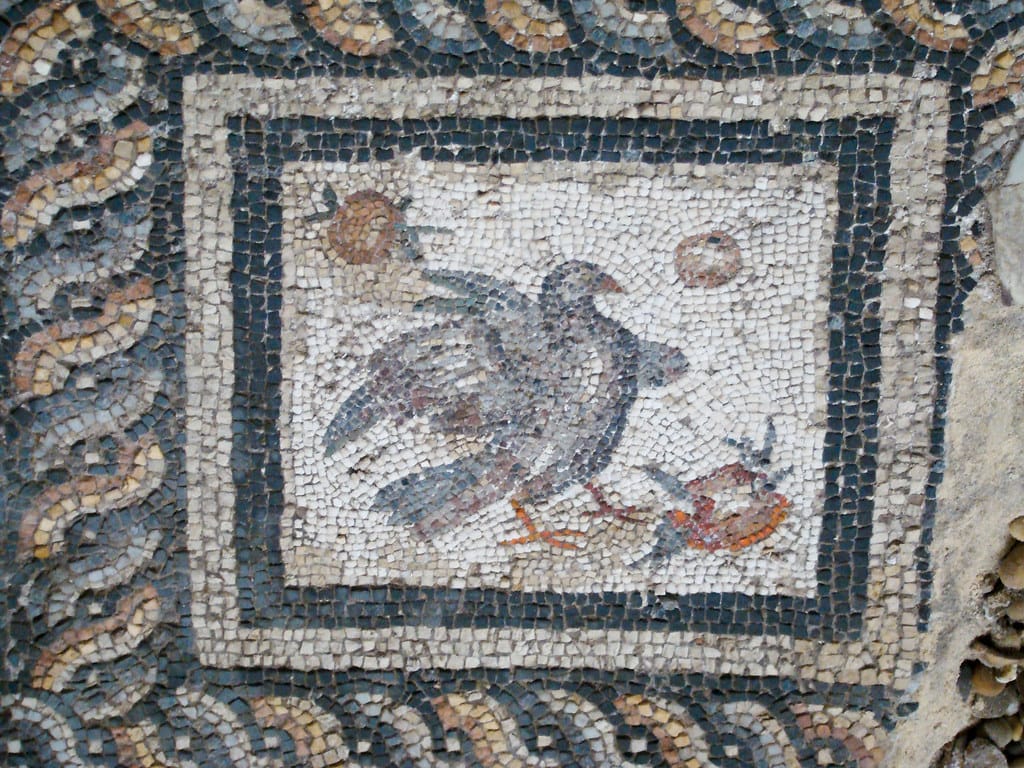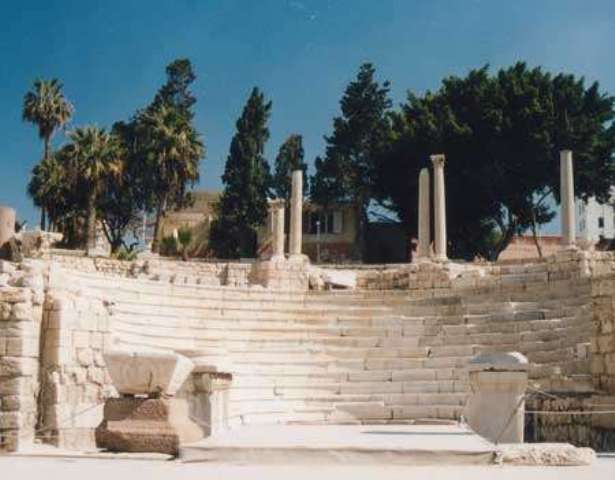Roman Villa of the Birds in Alexandria
Visitor Information
Google Rating: 4.8
Popularity: Very Low
Google Maps: View on Google Maps
Country: Egypt
Civilization: Roman
Remains: Domestic
History
The Roman Villa of the Birds is located in Alexandria, Egypt, within the Kom el-Dikka archaeological site. It was built during the Early Roman period, most likely in the 1st century AD, when Alexandria was a thriving city under Roman rule. This area was originally a wealthy residential district, reflecting the prosperity of the Roman elite living in the city.
During the 1st to 3rd centuries AD, the villa served as a private residence. It remained in use until the late 3rd century when it was destroyed by fire. Following this destruction, the villa was plundered, but despite this, its mosaics survived in relatively good condition. After the fire and looting, the site was reoccupied, though the nature of this later use is less clear.
In the following centuries, Kom el-Dikka transformed from a residential neighborhood into a major civic center. Between the 4th and 7th centuries AD, the area saw the construction of public baths, auditoria, and a theater, marking a shift in its urban function during the Late Roman and Byzantine periods. The villa itself remained part of this evolving landscape, though its original residential role had ended.
Remains
The villa’s layout and original floorplans have been preserved, revealing a well-planned Roman residence. It features mosaic floors covering nearly 110 square feet, with four mosaics surviving. Two of these mosaics are fully intact, while the other two are partially preserved. The mosaics are notable for their artistic quality and variety.
The most famous mosaic, known as α-5, displays nine squares, each illustrating a different bird species such as a parrot, purple gallinule, teal duck, peacock, pigeon, and quail or partridge. This mosaic combines Egyptian artistic traditions with influences from western Roman provinces and the city of Pergamon, making it a rare example of figural mosaic art from Roman Alexandria.
The villa includes a formal dining room, or triclinium, which is the largest room and features a geometric mosaic floor. This room was accessible from a central courtyard and likely served as a public space for entertaining guests. A bedroom, called a cubiculum, contains mosaics with geometric and floral patterns and a central panther figure. An adjoining annex room, separated by a thin screen wall, has a simpler black and white mosaic design.
Construction materials include limestone from Helwan, used in parts of the villa’s walls. These walls were rebuilt using traditional Roman building methods, with new sections clearly distinguishable from the original structures. To protect the brightly colored mosaics from sunlight, a roofed structure with glass walls was installed. A wooden footbridge allows access over the mosaics without causing damage.
The villa lies within the larger Kom el-Dikka archaeological park, which covers nearly 40,000 square meters and is situated below the current street level of Alexandria. Excavations and conservation efforts began in 1998, led by the American Research Center in Egypt in partnership with international teams. These efforts included mosaic conservation, landscaping, and the development of infrastructure to preserve the site.









